We Love You, Kinneret: The Rising Sea Level Brings Joy
The Kinneret Authority is preparing for rain showers and anticipating high flow rates in the streams. For the people of Tiberias and the surrounding area, when the Kinneret is full, spirits are high, and vice versa. But it's more than that—the largest freshwater lake in the country has long been a national symbol.
 (Photo: Kinneret Authority)
(Photo: Kinneret Authority)Oh, my Kinneret: After five years of drought, the Kinneret—the national baby—is once again filling with water, bringing much relief. The Kinneret's worrying state has been in the sights of the Kinneret Authority in recent years. This week, following a massive winter performance, they are expressing satisfaction with the addition of about a meter to the level of the largest freshwater lake in the country. "The Kinneret is a symbol—when the Kinneret is full, everyone feels good," they say.
Located in northeastern Israel, the Kinneret is the largest freshwater lake in Israel and the lowest freshwater lake in the world. The Kinneret once supplied about a quarter of Israel's water consumption, but due to declining water levels, a result of recent years of drought, water pumping from the lake has decreased. Instead, water is supplied through desalination plants, and today the Kinneret provides only 2 percent of total consumption. The Kinneret's level changes and is around 210 meters below sea level.
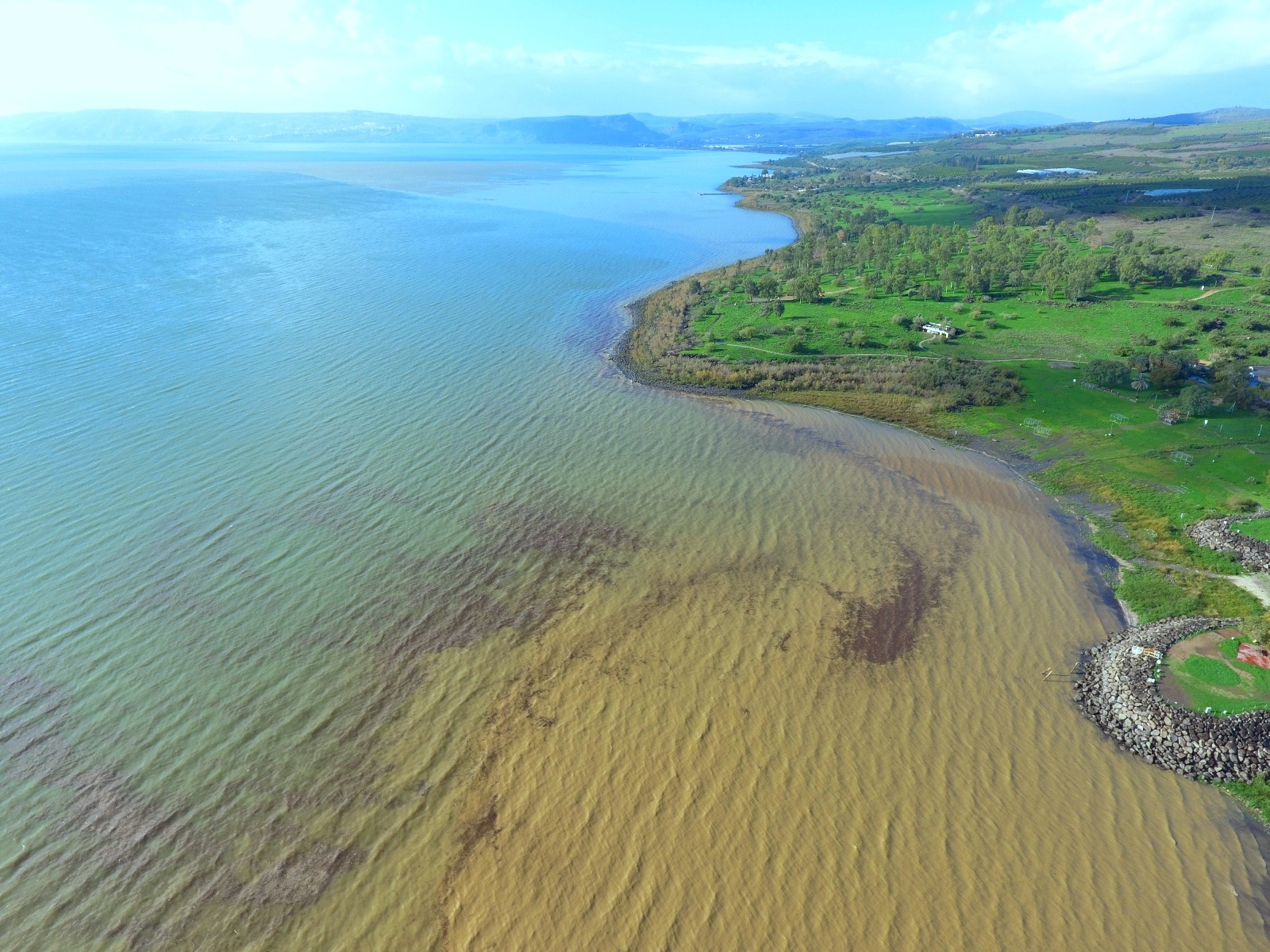 (Photo: Kinneret Authority)
(Photo: Kinneret Authority)The Kinneret endured five hard years since the unforgettable winter of 2013, when discussions began about opening the Degania Dam (a dam regulating the Kinneret's water flow to the Jordan River and the Dead Sea). The decline in levels rendered the lake shrunken and neglected in appearance. Last year, due to declining Kinneret levels, the sides of a giant boat near Tel Beit Yerah were exposed, as well as wide beach strips around the national lake. At that time, according to Water Authority data, two significant negative "records" were broken in August 2017: a negative record of water inlets to the Kinneret, meaning much more water exited the Kinneret—mainly due to evaporation—than entered via stream inflows. The second broken record was the all-time low volume of spring flows in Nahal Taninim (one of the Kinneret's two main outflows). The Water Authority announced at that time that the fourth consecutive drought caused the drying of springs in the Galilee, which had never dried up, and an unprecedented drop in the sources of the Jordan River.
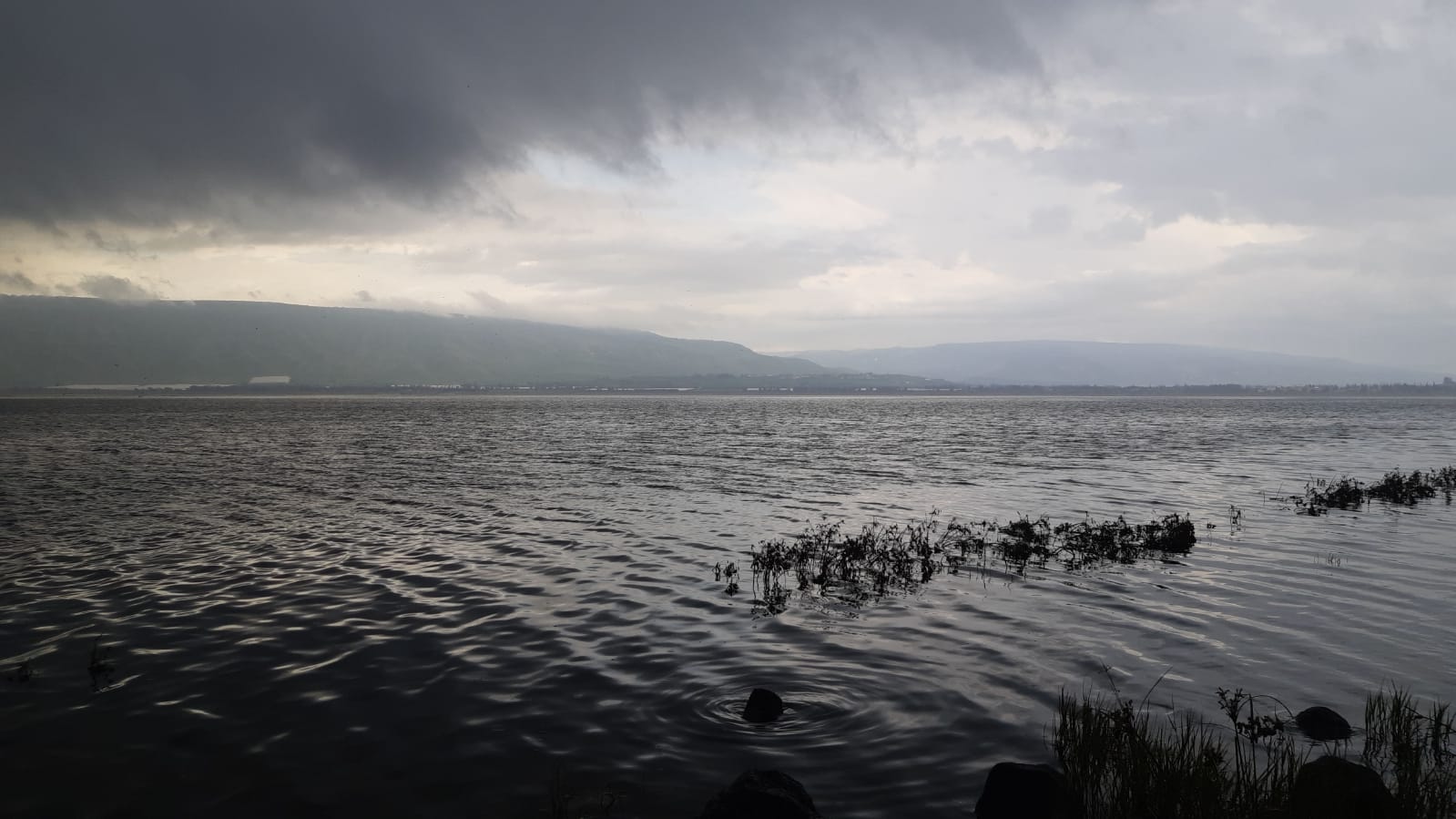 (Photo: Shai Mizrahi / Kinneret Authority)
(Photo: Shai Mizrahi / Kinneret Authority)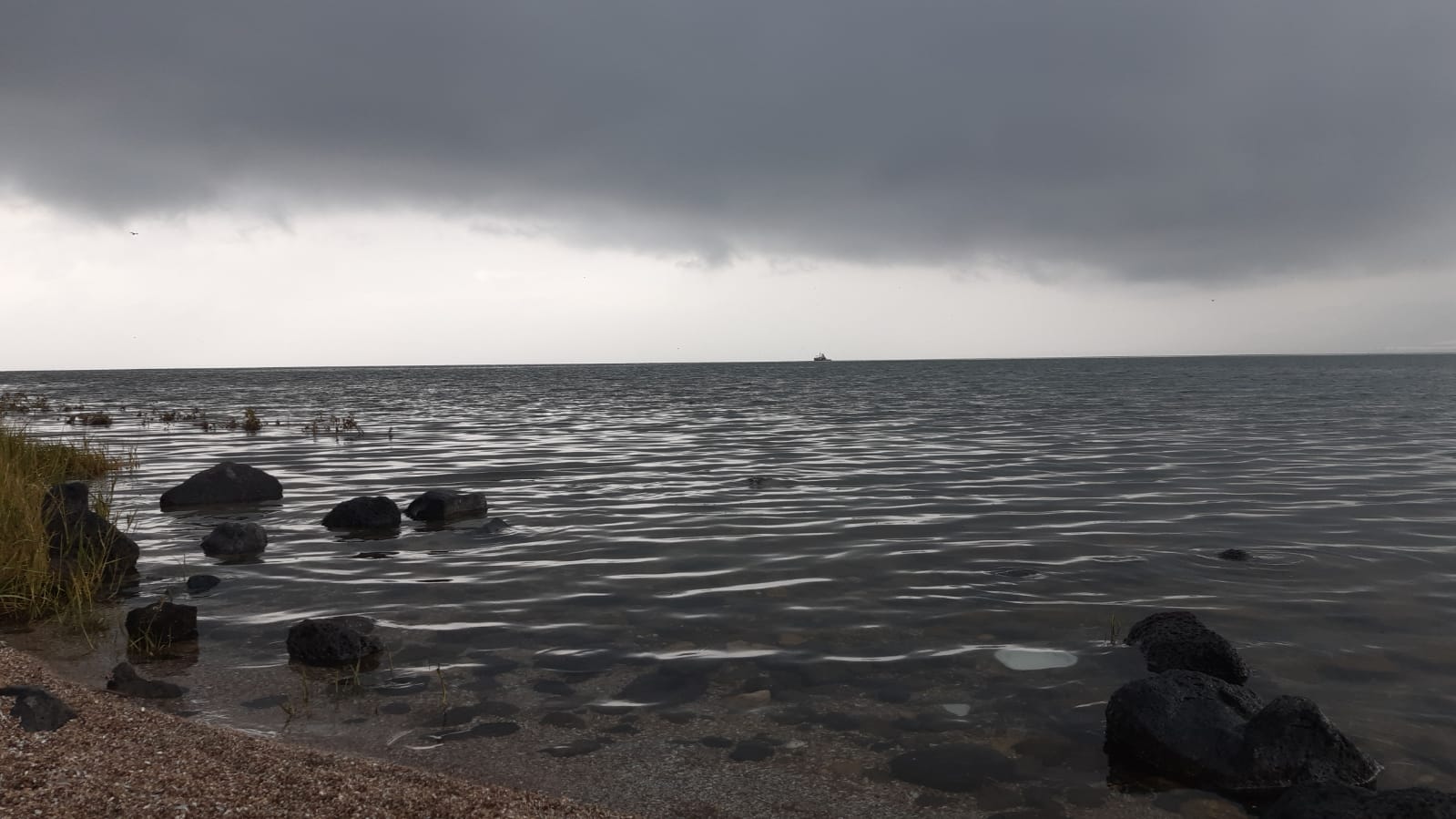 (Photo: Shai Mizrahi / Kinneret Authority)
(Photo: Shai Mizrahi / Kinneret Authority)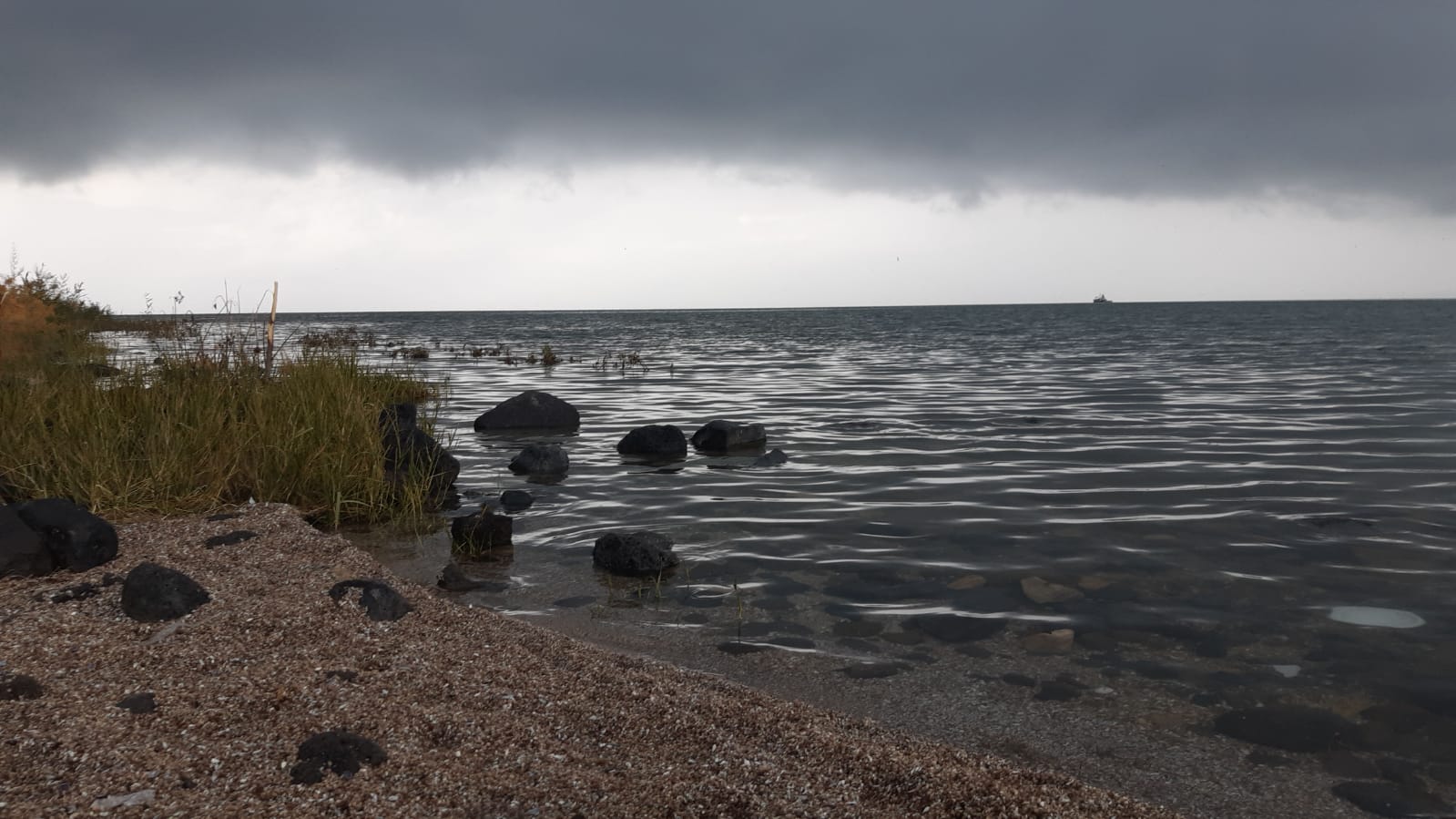 (Photo: Shai Mizrahi / Kinneret Authority)
(Photo: Shai Mizrahi / Kinneret Authority)"Seeing a dry stream is very sad"
The current winter and the impressive rain episodes have created an optimistic atmosphere around the Kinneret, which, as is known, is a tourist site attracting hundreds of thousands of visitors each year. Since the beginning of the winter, the level has risen by about a meter and currently stands at minus 213.635. The Kinneret Authority is preparing for rain showers and expecting high flow rates in the streams. For the people of Tiberias and the surrounding area, when the Kinneret is full, spirits are high, and vice versa. But it's more than that—the largest freshwater lake in the country has long been a national symbol.
Besides the rains, the Kinneret is filled by the stream flows surrounding the basin. Without proper maintenance of the streams, water may be lost along the way. Oshri Iluz, an engineer in the Kinneret Authority Drainage Department, says this week: "All drainage channels in the catchment basin and streams are flowing at levels we haven't seen in the last five years. Since 2013, we haven't seen such a significant event, and obviously, it has affected the rising levels, and as known, the Kinneret has risen by about a meter. We had five very hard years—it was simply a habit of experiencing dry winters."
 Oshri Iluz, Engineer in the Drainage Department (Photo: Kinneret Authority)
Oshri Iluz, Engineer in the Drainage Department (Photo: Kinneret Authority)The Drainage Authority is responsible for the proper regulation and drainage of the streams flowing into the Kinneret. "In recent years, we've prepared the streams and channels to transport water to the Kinneret. The goal is not to lose water, ensuring higher flow rates in the streams, and to prevent and minimize floods. We are working to regulate drainage, which improves the streams' ability to absorb and transfer water to the Kinneret—thereby impacting the water level."
What actions are you taking?
"We are preparing the streams and drainage channels for unusual flow events. We are waiting for the rare rain event to regulate the stream, so it can handle high flow volumes. Throughout the year, we are regulating streams, increasing the flow and volume section, expanding and deepening it, and preparing for extreme events, thus minimizing the chances of floods and inundations in agricultural areas or urban centers, as drainage channels pass through them. We are performing tasks like earthworks, vegetation trimming, cutting back overgrowth, removing sediment, widening, and strengthening banks mechanically by placing boulder riprap to minimize the chances of floods. This way, we increase the stream's flow cross-section."
The area of responsibility covers the entire Kinneret catchment basin—from Metula in the north to the Jordan Valley, including all sources of the Jordan River. "Every drop that falls in the area and reaches the Kinneret is our responsibility, and we are in constant maintenance," says Iluz.
What were the consequences you saw in the field due to the level drop?
"There are ecological and environmental impacts. It affects certain birds that are not seen in certain locations when the level is low. Now, for example, at a point in the upper Jordan River, north of the Kinneret, you can see quantities of birds settling and animals—it is a whole world. Beyond that, there is an impact in the tourism aspect. Along the streams, we set up promenades, and it attracts views to see a flowing stream at high levels, which makes an impact. It's nice to see a flowing stream, especially when a promenade is accessible. We are out in the field and environment all day, and we see gatherings around stream flows, around the Kinneret's shore where the level has risen. There is excitement; it's something national for all of us. The presence of water has a positive impact.
The streams have gone through five difficult years. Seeing a dry stream is very sad. Until recently, most streams almost didn't flow during winter. It definitely affects the drying out of vegetation turning thorny, animals not appearing, impacting flora and fauna. We are in the middle of winter, and the Kinneret has risen by nearly a meter. I hope the winter continues like this; it's just fun. The more flows into the streams and Kinneret rising—it does good for everyone and the environment."
Hagai Levin, Head of Supervision and Enforcement Unit at the Kinneret Authority, says: "We, the people of the Kinneret, live here daily, and it is important to us that it returns to its familiar dimensions. This winter, we see with our eyes the rising Kinneret. Large areas that were water-exposed, with wide beach strips, are reducing, and the water keeps rising. It looks good. In terms of enforcement, there's no significant change right now; it doesn't alter the assessment or conduct during this calmer season. We assist in enforcement in the field of fishing and beach driving bans. Fewer people come to vacation on the beaches on rainy days; more come to the Kinneret Path, so we have few unusual events lately. However, we are preparing for the season's opening in about two months."
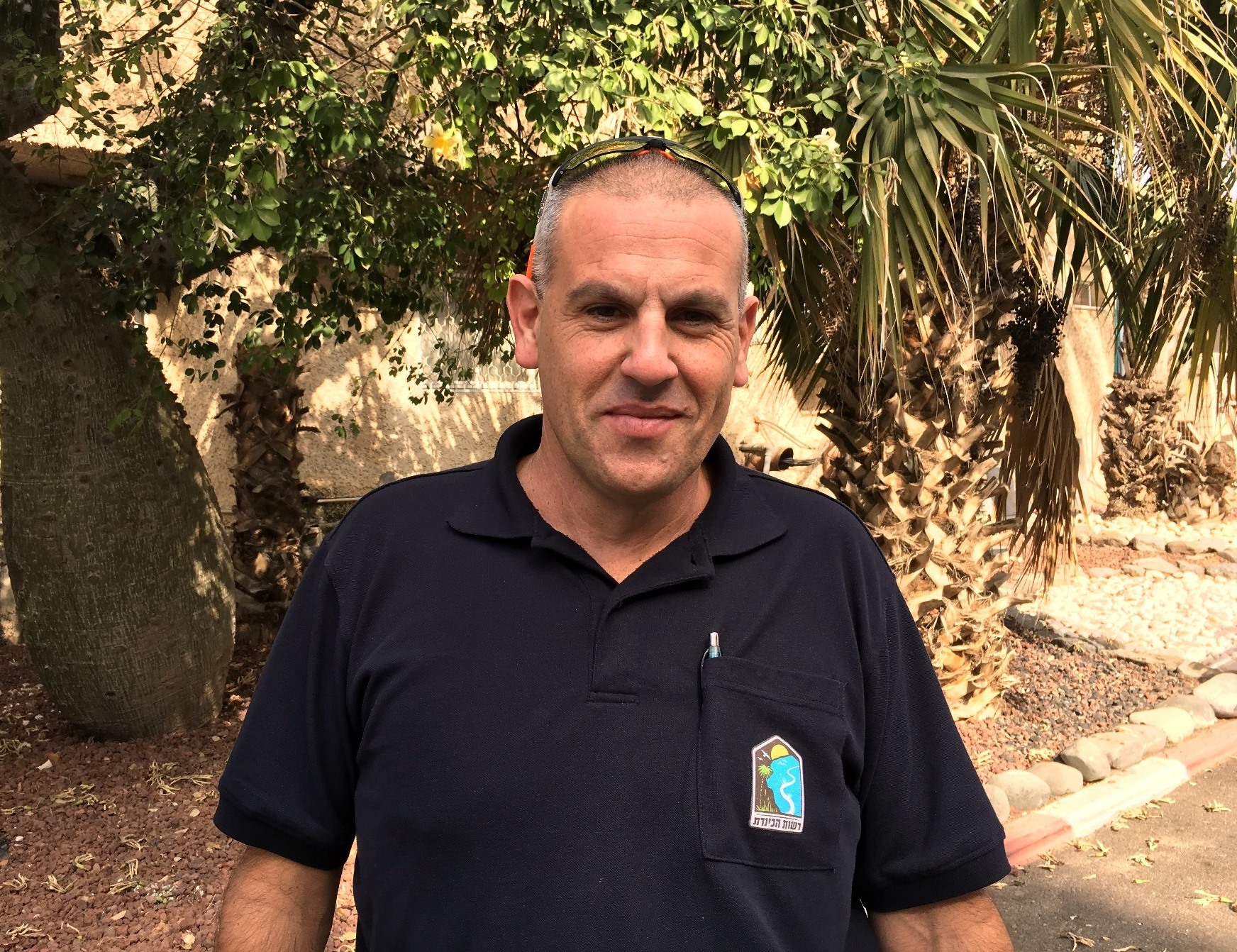 Hagai Levin Head of Supervision and Enforcement (Photo: Kinneret Authority)
Hagai Levin Head of Supervision and Enforcement (Photo: Kinneret Authority)According to Levin, in the corresponding season last year, there was much less water: "We are looking forward to the next rain show. We want it to continue. We invite the public to come to the Kinneret; this is an opportunity for winter tourism, here there's a mix of green, water, and hiking trails. The Kinneret Path is beautifully traveled, especially on non-rainy days. The fact that the level rise makes the public happy highlights the importance of the Kinneret as a national lake. Factually, a low or high level doesn't affect the faucet water, but still, seeing full beaches and the rising Kinneret is part of the symbols of a true winter. It also symbolizes the memory of the Kinneret in days when it was fuller, not less beautiful, but certainly fuller. The Kinneret is a symbol. When the Kinneret is full, everyone feels good. Besides, there are two things one cannot take their eyes off of—flowing water and roaring flames. Anyone who sees stream flows into the lake cannot tear away; it's an exciting display with many positives."
Pinchas Green, Deputy CEO of the Kinneret Authority, admits that the recent rain show does good, especially after five years of drought. "The shortfall created over five years is so large that even if it were an average or slightly above-average year, we wouldn't be able to cover it," Green says. "We must pray the winter continues as it started and does not stop." As of now, the Kinneret is 75 cm below the lower red line. In 2013, Green spoke of the possibility that it might be necessary to open the Degania Dam, "It was an exceptional winter, in which the Kinneret rose by 4.70 meters, and I thought they would open the dam, but it wasn't needed as the level reached a high height. In '92 there was an unusual winter, where the level also rose by 4 meters, and another meter and a half was flowed towards the Dead Sea, meaning there was room for another meter and a half, so we would have risen by five and a half meters and still been five meters away from the upper line."
 Pinchas Green (Photo: Kinneret Authority)
Pinchas Green (Photo: Kinneret Authority)While Green is optimistic, he emphasizes that 75 cm are still missing to reach the lower red line and another 5 meters to the upper line. "The dropping level affects the complex ecological system in the Kinneret. The lake harbors fish, tiny animals, and algae, and there is a balance between the system's components, which affects water quality. If there is a disturbance in the balance, there is deterioration in water quality. The lowest level ever measured in the Kinneret was in December 2001, and it stood at minus 214.87, 1.87 below the lower line. It was dubbed 'the black line' because no one wanted to reach it. At the end of the summer, we got quite close to it, with the level at minus 214.66. We were not far from it, and fortunately, the rain came.
Do the extractions also affect the level drop?
"All the measurements of levels and stream flows are conducted by the Hydrological Service of the Water Service. There are 3 sources of water in the economy, with the Kinneret being one of them. With the introduction of desalination facilities, less was pumped from the Kinneret. In recent years, virtually no withdrawals took place, except for the benefit of the Kinneret and the Kingdom of Jordan. There wasn't much to do. If insufficient water enters from the Jordan or streams, while simultaneously there is evaporation—even without extraction, the level drops. We are now optimistic and hope by Hashem it continues this way and we begin a sequence of good years."

